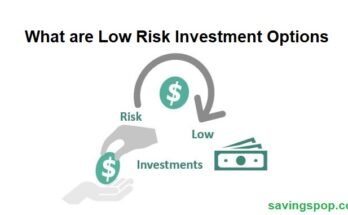A Baseline Budget in Project Management is the financial cornerstone of any venture. It serves as the initial roadmap, delineating expected charges and crucial resources for the task’s final touch. Consider it the assignment’s monetary compass, guiding expenditure selections from start to completion. Throughout the venture’s lifecycle, this finances acts as a reference factor, helping to monitor spending and ensure adherence to monetary plans. Any deviations from the baseline can signal capacity challenges, prompting modifications to maintain the undertaking on the right track. Essentially, the Baseline Budget affords a solid monetary framework, enabling knowledgeable choice-making and effective useful resource control to acquire undertaking desires efficaciously.
Baseline Budget in Project Management
Baseline finance is the approved version of an undertaking’s price range that consists of all envisioned expenses and serves as a reference point all through the undertaking. It represents the deliberate finances for the mission, detailing how a lot of money could be needed to finish the undertaking as to start with scope. The baseline budget includes direct charges, indirect fees, contingency reserves, and control reserves, making ensure a complete monetary plan.
Importance
- Tracking Performance: The baseline budget allows project managers to track actual spending against planned spending, helping them understand if the project is on track financially. This comparison is crucial for identifying any deviations early and taking corrective actions.
- Managing Changes: It helps in managing changes by providing a benchmark against which the impact of changes can be measured. When changes occur, their financial implications can be evaluated against the baseline budget in project management.
- Reporting and Accountability: It ensures transparency and accountability, making it easier to report progress to stakeholders. Regular updates against the baseline budget help in maintaining stakeholder confidence and trust.
- Decision Making: Provides critical data for making informed decisions about resource allocation, scope adjustments, and other project changes. It serves as a foundation for financial decisions, ensuring they are backed by solid data.
Must Read: What is Budget Manual?
Components
- Direct Costs: Costs that may be without delay attributed to the challenge, along with exertions, materials, and devices. These are often the maximum extensive part of the mission price range and require targeted planning.
- Indirect Costs: Costs that aren’t at once related to the project but are important for its completion, like administrative fees and utilities. These charges, whilst now not as visible as direct fees, are essential for the general functioning of the venture.
- Contingency Reserves: Extra price range set apart to cover surprising costs. These reserves are important for handling uncertainties and dangers that might affect the undertaking budget.
- Management Reserves: Additional funds controlled by senior management for unforeseen project changes. These funds provide a financial buffer for significant changes that could not have been predicted during the initial planning phase.
Creating a Baseline Budget
Steps Involved
- Define Scope and Objectives: Clearly outline the challenge’s scope and objectives to apprehend what needs to be budgeted. This step includes defining deliverables, timelines, and key milestones.
- Estimate Costs: Break down the assignment into smaller duties and estimate the fee for each mission. This precise breakdown allows for creating accurate fee estimates and identifying capability value-saving possibilities.
- Consolidate Estimates: Combine all of the venture estimates to shape the whole venture budget. This step involves summing up direct and indirect expenses to get a complete view of the assignment’s economic necessities.
- Add Contingency Reserves: Include a greater budget to cover ability risks and uncertainties. This step guarantees that the undertaking finances have built-in flexibility to address sudden prices.
- Review and Approve: Get the baseline budget reviewed and accredited with the aid of stakeholders. This approval system guarantees that all parties agree on the price range and understand its implications.
Tools and Techniques
- Work Breakdown Structure (WBS): Helps in breaking down the project into manageable tasks. WBS provides a visual representation of the project’s scope, making it easier to estimate costs accurately.
- Cost Estimation Techniques: Methods like expert judgment, analogous estimating, parametric estimating, and bottom-up estimating. These techniques help in generating accurate cost estimates based on different project requirements and historical data.
- Software Tools: Project management software like Microsoft Project, Primavera, and others help in creating and managing budgets. These tools offer features like budget tracking, variance analysis, and reporting, simplifying budget management.
Common Challenges
- Scope Creep: Uncontrolled changes in the project’s scope can affect the baseline budget. Managing scope changes effectively is crucial for maintaining the integrity of the baseline budget.
- Inaccurate Estimates: Poor cost estimates can lead to budget overruns. Using reliable estimation techniques and historical data can help in generating more accurate estimates.
- Stakeholder Disagreements: Misalignment among stakeholders can delay budget approval. Effective communication and stakeholder management can help in resolving disagreements and ensuring timely budget approval.
- Risk Management: Failing to identify and plan for risks can impact the budget. Proactive risk management, including the identification and mitigation of potential risks, is essential for maintaining the baseline budget.
Using the Baseline Budget
Monitoring and Controlling Costs
- Regular Reviews: Conduct regular reviews to compare actual costs with the baseline budget. These reviews help in identifying deviations early and taking corrective actions.
- Cost Control Measures: Implement measures to control costs and manage variances. These measures can include cost-saving initiatives, renegotiating contracts, and optimizing resource allocation.
Variance Analysis
- Identify Variances: Determine any variations between the deliberate price range and actual spending. Variance analysis facilitates information on the root causes of deviations and their impact on the venture.
- Analyze Causes: Understand the motives at the back of variances to deal with them efficaciously. Analyzing the causes of variances enables in implementation of targeted corrective movements.
- Take Corrective Actions: Implement actions to carry the mission lower back heading in the right direction. These actions can include adjusting the project scope, reallocating resources, and revising the mission timetable.
Adjustments and Updates
- Change Control Process: Use a formal process to manage changes and update the baseline budget. A structured change control process ensures that changes are evaluated and approved systematically.
- Re-baselining: In some cases, re-baselining may be necessary if significant changes occur. Re-baselining involves creating a new baseline budget that reflects the updated project scope and objectives.
Case Studies and Examples
Real-World Applications
- Construction Projects: Baseline budgets in construction help manage costs related to materials, labor, and equipment. For example, a baseline budget for a new building project would include detailed estimates for all construction materials, labor costs, and equipment rentals.
- IT Projects: For software development, baseline budgets track expenses for development, testing, and deployment. An IT project baseline budget would include costs for software licenses, development tools, testing environments, and deployment infrastructure.
- Event Management: Baseline budgets ensure all aspects of event planning, from venue to catering, are financially controlled. An event management baseline budget would cover venue rental, catering services, entertainment, and marketing expenses.
Success Stories
- Example 1: A large construction company completed a skyscraper project on time and within budget by rigorously adhering to its baseline budget. They used detailed cost estimates, regular budget reviews, and effective change management to maintain control over project finances.
- Example 2: An IT company managed to develop and launch a new application within budget by continuously monitoring and adjusting its baseline budget. They used project management software to track costs and implemented corrective actions promptly to address any variances.
Lessons Learned
- Importance of Accurate Estimations: Ensuring initial cost estimates are as accurate as possible is crucial. Accurate estimations help in creating a realistic baseline budget and reducing the risk of budget overruns.
- Effective Change Management: Having a robust process to manage changes helps in maintaining the baseline budget. Change management ensures that any changes to the project scope or objectives are evaluated for their financial impact and approved systematically.
Best Practices for Baseline Budget Management
Tips for Accurate Budgeting
- Detailed Planning: Invest time in detailed planning to improve the accuracy of cost estimates. Detailed planning helps in identifying all project requirements and generating comprehensive cost estimates.
- Engage Experts: Involve experts and stakeholders in the budgeting process. Expert input ensures that all aspects of the project are considered and cost estimates are realistic.
- Historical Data: Use historical data from similar projects to inform estimates. Historical data provides valuable insights into cost trends and helps in generating accurate estimates.
- Regular Updates: Keep the budget updated with actual costs and changes. Regular updates ensure that the budget reflects the current state of the project and helps in managing variances effectively.
Avoiding Common Pitfalls
- Underestimating Costs: Avoid the temptation to underestimate expenses to make the mission appear extra possible. Underestimating charges can cause price range overruns and mission delays.
- Ignoring Risks: Plan for potential dangers and encompass contingency reserves. Risk management ensures that the budget has integrated flexibility to address surprising costs.
- Poor Communication: Ensure clean conversation amongst all stakeholders regarding the finances. Effective communication allows for aligning stakeholders and making sure of timely price range approval.
Leveraging Technology
- Project Management Software: Utilize tools that provide budget tracking and reporting features. Project management software offers features like budget tracking,




